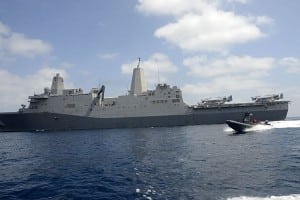
Navy acquisition chief Sean Stackley told several lawmakers on Friday that he appreciates the money they provided for an extra LPD amphibious transport dock but could not promise them the service would actually spend the money as intended and get a ship on contract any time soon. The four congressional defense committees provided varying levels of funding for the ship–as much as $800 million–in the fiscal year 2015 authorization and appropriations bills. Rep. Steven Palazzo (R-Miss.), who represents the Ingalls Shipbuilding [HII] yard…













